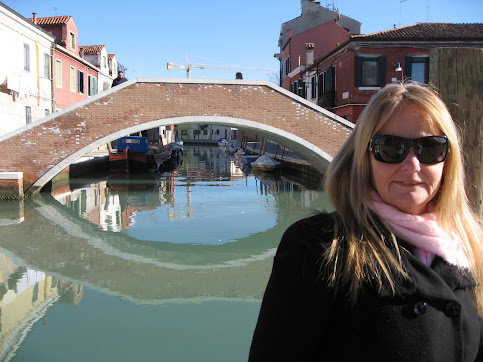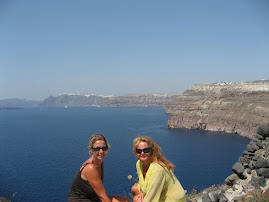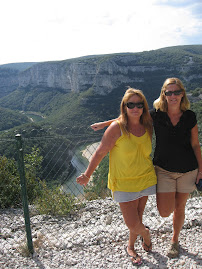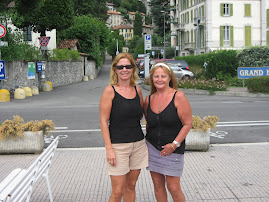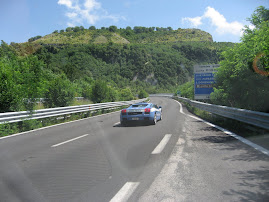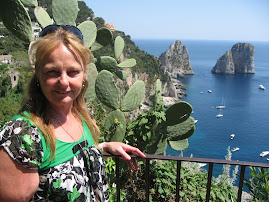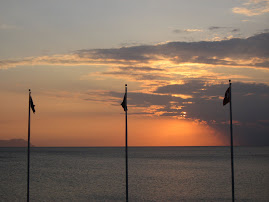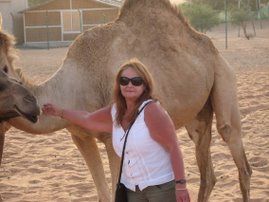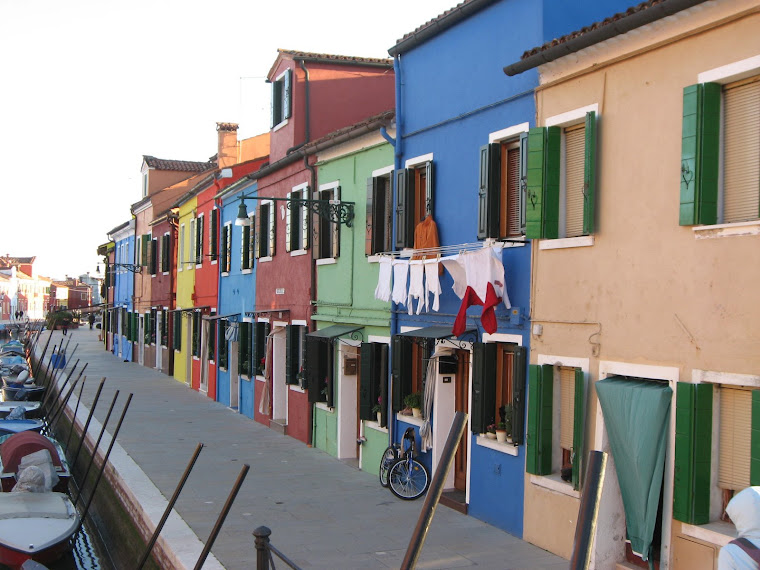 Vicki in what is locally called Lion Square in Rethymno. Actually named Platanos Square home to the Rimondi Fountain. The water runs from three spouts (lion heads) into three sinks. Today, only parts of the inscribed words ‘Liberalitatis’ and ‘Fontes’ can be seen. All around Lion Square are Cafes and Tavernas where we had dinner before heading off to the Port and anovernight ferry to Naxos in the Cyclades.
Vicki in what is locally called Lion Square in Rethymno. Actually named Platanos Square home to the Rimondi Fountain. The water runs from three spouts (lion heads) into three sinks. Today, only parts of the inscribed words ‘Liberalitatis’ and ‘Fontes’ can be seen. All around Lion Square are Cafes and Tavernas where we had dinner before heading off to the Port and anovernight ferry to Naxos in the Cyclades. Never got to the bottom of what these were all about.. they were like letterboxes on the roadside.. very pretty.. I guess its all to do with the Greek Orthodox religion of which I have not an incling..
Never got to the bottom of what these were all about.. they were like letterboxes on the roadside.. very pretty.. I guess its all to do with the Greek Orthodox religion of which I have not an incling..
In 1645, after a two month siege and after sustaining terrible losses, the Turks overwhelmed the whole island. Chania became the Turkish capital on Crete, and its churches were converted to mosques. The Turks were expelled in 1898 when Prince George became the High Commissioner for Crete. His regency was short lived, for soon after, Crete became part of the Greek state. In World War II, Chania sustained severe damage throughout the city, except, for area around the harbour. The old Turkish mosque is now being used to host modern art exhibitions and of course the old horse and cart touristy thing.. and no we didnt succumb!
Chania’s Venetian harbour and Old Town area is one of the most memorable towns of crete. The pebbled narrow streets, greek dancing in the evenings, cafes, restaurants and a beautiful view of the harbour and lighthouse is Chania to a T.
At the far end of the harbour is the Firkas fort which was a fortress during the Venetian occupation. On 1st December 1913 the Greek flag was raised there in celebration of the reunification of Crete with Greece. Today the fort is home to the Naval Museum. Opposite the Firkas fort, stands the magnificent Venetian lighthouse. The lighthouse was built in the 16 century and later restored by the Egyptians. The harbour itself is protected by a Venetian breakwater, constructed from enormous rocks... and there is me right at the top of the Lighthouse after walking the 3km length of the 'boardwalk' to get there.
Chania is the main town in the west of Crete, with the islands second largest population. It was the capital of Crete until 1972, when Heraklion took over the role. Chania is divided into two parts, the New Town, where the day to day business goes on, with its shops, offices, post office and banks, and the Old Town, built around the Venetian harbour consisting of numerous picturesque narrow streets, and with its architecture displaying the influence of many decades of foreign domination.
 Driving West to East along northern Crete there really is some beautiful scenery.. we stopped here for a drink.. rather expensive but million dollar views.
Driving West to East along northern Crete there really is some beautiful scenery.. we stopped here for a drink.. rather expensive but million dollar views.
 Coraleen at Knossos in front of one of the many paintings.. that we found totally boring! But I am sure you would like to know a little about what Knossos is all about.. I had to look it up as I felt it was whole lot of adieu about nothing.. the heretic that I am!
Coraleen at Knossos in front of one of the many paintings.. that we found totally boring! But I am sure you would like to know a little about what Knossos is all about.. I had to look it up as I felt it was whole lot of adieu about nothing.. the heretic that I am!The Minoan Palace of Knossos is a large archaeological site situated along the road to Archanes, about 5 kilometres from the town centre of Heraklion, and is easily accessible by bus or taxi. The imposing Palace was built on the hill of Kefala next to the river Kairatos. he site was first discovered in 1878 by Minos Kalokairinos, but major work did not start until 1900 when the British archaeologist, Arthur Evans, started his own excavations, these continued for the next 35 years. During this time some parts of the palace were "restored" in such a way as that it is possible to appreciate the grandeur and complexity of this structure which occupies approximately 20,000 square meters
It was Evans who designated the buildings at Knossos to be a palace, he also named the civilisation that had built it as the Minoans, after the mythological Greek King Minos. Since then the actual function of the buildings at Knossos, and of the three other large palaces on Crete have been questioned and new interpretations advanced. Some now believe that this, and the three other large palaces of Minoan Crete are temples or administrative centres or even necropolises.
Over the centuries, a number of palaces have been built and destroyed on the site where Knossos now stands, and there is also some evidence that the location was inhabited during Neolithic times. On the ruins of the Neolithic settlement was built the first Minoan palace in about 1900 B.C. This was destroyed around 1700 B.C. and a new palace was built in its place. This palace survived the conquest of the island by Mycenaean Greeks, sometime around the middle of the fifteenth century B.C. All of the other palaces on Crete were destroyed at this time, but Knossos was preserved to supply the needs of the newly arrived conquerors. The Minoan civilisation reached its peak and Knossos was its most important city-state between 1.700 to 1.450 B.C. During these years the city was destroyed twice by earthquakes, and had to be rebuilt. It is estimated that the city of Knossos had 100.000 citizens and it continued to be an important city-state until the early Byzantine period. The site was later abandoned and gradually fell into ruin.
 Coraleen at Vai beach.. the famous beach of the Palm Trees .. with no confirmed knowledge of their origin.
Coraleen at Vai beach.. the famous beach of the Palm Trees .. with no confirmed knowledge of their origin. View from our 'cheap' hotel in Crete to the gorgeous 5 star one next door where we spent most of our time. We opted for a couple of nights in a resort area given the constant high temperatures and the dire need of a pool and chose Stalis.
View from our 'cheap' hotel in Crete to the gorgeous 5 star one next door where we spent most of our time. We opted for a couple of nights in a resort area given the constant high temperatures and the dire need of a pool and chose Stalis.
Stalis sometimes known as Stalida, is strategically placed on the north coast of Crete, between the larger, better known resorts, of Malia and Hersonissos, all of which are linked by the north coast highway.
The guide books say this about Stalis....Holidays in Stalis are for beach lovers, couples and families who would like a developed resort offering a range of beaches. As you would expect, there are plenty of, restaurants and cocktail bars. If you prefer English or Irish style pubs, then you wont be disappointed. All this does not mean that the Greek taverna has been superseded, there are still plenty to be found, many are located along the main beach road. This resort is great for families with its long stretch of golden beach, and variety of water sports. Being such a popular resort means that during the high season the beach can get quite crowded ... and yes it was.. bloody crowded! but we enjoyed it..
 Vicki at Vai beach.. not a palm tree in site.. just beautiful sand, clear water and lots of sun and R and R! According to a legend, Arab pirates who came to Crete threw out the pips of the dates they were eating while they were here and that from these came this grove of 5000 palms.
Vicki at Vai beach.. not a palm tree in site.. just beautiful sand, clear water and lots of sun and R and R! According to a legend, Arab pirates who came to Crete threw out the pips of the dates they were eating while they were here and that from these came this grove of 5000 palms.
And Wikipedia about Vai Beach ...... The palm beach of Vai is one of the largest attractions of the Mediterranean island of Crete. It features the largest natural palm forest in Europe, made up of palm tree Phoenix Theophrastii.
For tourism Vai was discovered at the end of the 1970s by the last Hippies who fled the hot-spots Matala and Preveli . At the beginning of the 1980s Vai was full of backpacker tourists from the whole world, leading to a mixture of chaotic campground and garbage dump. Vai was enclosed and declared as a protected area. The unique forest recovered, the beach became clean.
The palm beach, which belongs to the Monastery Toplou, is the touristic center of East Crete, with thousands of visitors each year.
